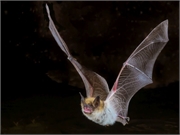Hibernating Animals Give Clues to Obesity in Humans

TUESDAY, Nov. 26, 2019 (HealthDay News) -- A look at the genetics of hibernating animals might shed light on obesity in humans.
"Hibernators have evolved an incredible ability to control their metabolism," explained Christopher Gregg, an associate professor in the Department of Neurology and Anatomy at the University of Utah.
"Metabolism shapes risks for a lot of different diseases, including obesity, type 2 diabetes, cancer and Alzheimer's disease. We believe that understanding the parts of the genome that are linked to hibernation will help us learn to control risks for some these major diseases," Gregg added in a university news release.
"A big surprise from our new study is that these important parts of the genome were hidden from us in 98% of the genome that does not contain genes -- we used to call it 'junk DNA,'" he said.
In the study, Gregg and his colleagues analyzed the genomes of four hibernating mammals in different habitats worldwide: the thirteen-lined ground squirrel, little brown bat, gray mouse lemur, and lesser Madagascar hedgehog tenrec.
The researchers found that each of the four species had independently evolved short, non-coding DNA snippets, and that many of these regions are located near genes linked to obesity in humans.
These and other findings suggest that hibernators have evolved ways to "turn off" certain genetic elements that control the activity of obesity genes, something that mammals that do not hibernate cannot do, according to the researchers.
These newly discovered elements could improve the ability to learn how to assess and reduce obesity risks in humans.
The investigators also looked at human genes involved in Prader-Willi Syndrome, a genetic disorder that involves an abnormally increased appetite and morbid obesity. They found that these genes also have links to hibernator-associated regions.
"Our results show that hibernator accelerated regions are enriched near genes linked to obesity in studies of hundreds of thousands of people, as well as near genes linked to a syndromic form of obesity," said co-author Elliot Ferris, a bioinformatician in Gregg's lab.
"Therefore, by bringing together data from humans and hibernating animals, we were able to uncover candidate master regulatory switches in the genome for controlling mammalian obesity," Ferris added.
The study was published Nov. 26 in the journal Cell Reports.
More information
The U.S. Centers for Disease Control and Prevention has more on weight.

The news stories provided in Health News and our Health-E News Newsletter are a service of the nationally syndicated HealthDay® news and information company. Stories refer to national trends and breaking health news, and are not necessarily indicative of or always supported by our facility and providers. This information is provided for informational and educational purposes only, and is not intended to be a substitute for medical advice, diagnosis, or treatment.

